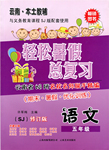题目内容
【题目】 People feel good about recycling, maybe even more so when it comes to electronics. While electronics recycling isn't bad, making it a panacea(万能药) for the e-waste problem we currently have certainly is. Unfortunately, that's how we think of recycling — and companies to jump on that trend to appear more “green”.
A case in point: Apple. In 2016, there was lots of report on Liam, a robot able to dismantle(拆卸) an iPhone in just 11 seconds — a good way to recycle 1.2 million units a year. That sounds amazing until you take into account the fact that Apple had actually sold 231 million new iPhones the year before. Liam, actually, is the perfect symbol for recycling in the field of high-tech: a drop of green water in an ocean of pollution.
According to a recent UN report, the US produces about 6.3 million tons or 14% of the world's electronic waste. Worldwide, almost 45 million tons of electronic waste were produced in 2016. Among them, only 20% had been recycled in some shape or form. The remaining 80% made its way to a more environmentally damaging end at the landfill(垃圾填埋场).
Of course, we can say it's time to double our recycling efforts. However, the huge amount of e-waste is impossible to cope with. The UN report points out that while there is an increased focus on recycling today compared to the past, the effort to reuse used devices simply can't keep pace with the high consumption rates for new devices.
In their environmental responsibility report, Apple admits that 77% of the carbon footprint of their electronics comes from their manufacture, versus(相对于) 17% comes from its actual use. The environmental effect of replacing a device, even if it is recycled after, remains significant.
【1】Which of the following can best describe Liam?
A.It's useful but can't make a big difference.
B.It's energy-saving but too expensive.
C.It's well-made but won't become popular.
D.It's advanced but impractical.
【2】What caused the e-waste recycling problem?
A.Few high-tech companies.
B.Not enough recycling efforts.
C.High demand for new electronics.
D.Difficult recycling processes.
【3】What does the author think of the electronics recycling?
A.It is very effective.
B.It is quite good.
C.It is environmentally damaging.
D.It is far from “green” recycling.
【4】What can be the best title for the text?
A.A Recent UN Report on E-Waste Problem
B.The Limitation of Electronics Recycling
C.A Good Way to Cope With E-Waste
D.The Responsibility for Apple to Decrease E-Waste
【答案】
【1】A
【2】C
【3】D
【4】B
【解析】
本文是一篇议论文。文章讨论了电子产品的回收。尽管人们对于电子产品的回收感到满意,但是现在电子产品的回收却有很大的局限性。
【1】细节理解题。根据第一段Liam, actually, is the perfect symbol for recycling in the field of high-tech: a drop of green water in an ocean of pollution.可知在高科技领域Liam是回收的完美代表,但事实上,只是污染世界里的一点绿滴。由此可见Liam不会产生太大影响,故选A。
【2】细节理解题。根据第四段the effort to reuse used devices simply can't keep pace with the high consumption rates for new devices.可知回收再利用电子产品的努力无法跟上对新电子产品的高消费率。由此可知对新电子产品的强烈需求导致了电子产品回收存在的问题。故选C。
【3】推理判断题。首先根据第一段Unfortunately, that's how we think of recycling — and companies to jump on that trend to appear more “green”.可知大部分公司只是跟随潮流让自己显得很环保,事实上并非如此,然后,根据The environmental effect of replacing a device, even if it is recycled after, remains significant.可知即使被回收,替换电子产品对环保的影响仍然很大。综上判断出我们可以得出电子产品的回收远非“绿色”回收。故选D。
【4】主旨大意题。通览全文可知,文章讨论了电子产品的回收。尽管人们对于电子产品的回收感到满意,但是现在电子产品的回收却有很大的局限性。因此选项B. The Limitation of Electronics Recycling(电子产品回收的局限)为最佳标题。故选B。
推断判断题就是推断隐含意义,根据文章的某个句子、段落或全文所提供的事实进行逻辑推理,推断出作者没有提到、没有明说或者可能发生的事实。推理判断题的题干特点:推断隐含意义的题干中常含infer(推断),suggest(暗示),imply(暗示),indicate(暗示),conclude(推断,得出结论)等词语。常见的题干形式如下:Wecanknowfromthepassagethat...;Wecaninferfromthe(first/last)passagethat...;Thepassage/authorimplies/suggeststhat...;Itcanbeconcludedfromthepassagethat...;Theunderlinedsentenceindicatesthat...等等,它的主要解题方法就是找到推理的依据,然后理解相关信息点的字面意义,最后结合语境和常识,在字面意义的基础上进行符合逻辑的推断,从而得到作者的言外之意。如第3小题,推理判断题。首先根据第一段Unfortunately, that's how we think of recycling — and companies to jump on that trend to appear more “green”.可知大部分公司只是跟随潮流让自己显得很环保,事实上并非如此,然后,根据The environmental effect of replacing a device, even if it is recycled after, remains significant.可知即使被回收,替换电子产品对环保的影响仍然很大。综上判断出我们可以得出电子产品的回收远非“绿色”回收。故选D。

 轻松暑假总复习系列答案
轻松暑假总复习系列答案